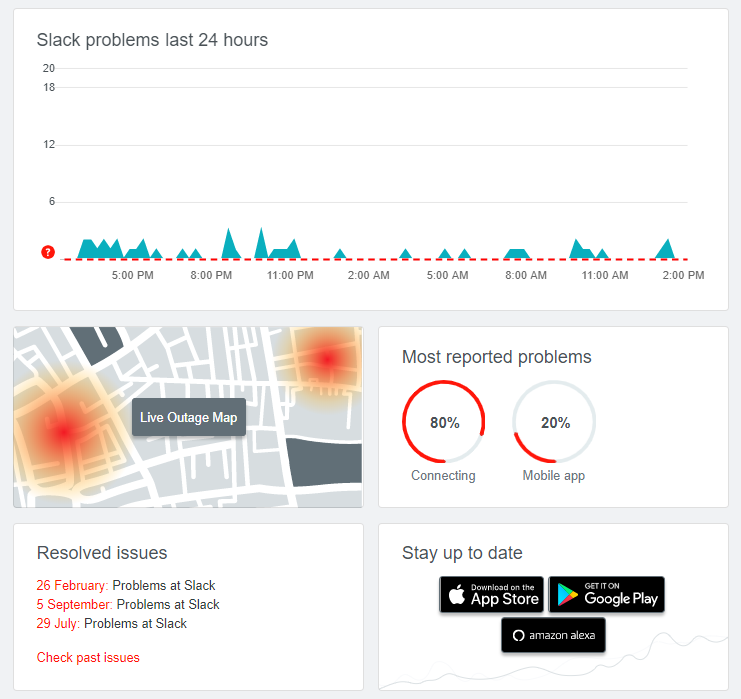Remote work has been on an upswing for years, with the number of employees telecommuting having increased by 159% since 2005, according to FlexJobs. And although stats aren’t in yet for the last few months, we’re predicting substantial growth in this percentage due to the work-from-home transitions occurring in the wake of the COVID-19 outbreak.
As more employees work remote for the purposes of social distancing, leading tech companies like Zoom, Slack, Microsoft Teams, and DocuSign are undoubtedly bearing the brunt of the new demand created by these transitions. So how are they holding up? And, more importantly, if you own a collaboration-focused SaaS startup that’s seeing similar growth, how can you maintain up-time in a period of unprecedented demand?
Let’s take a closer look…
Zoom
That popular video conferencing provider Zoom would come out ahead as a winner amidst rapid remote work adoption seems obvious – so it should come as no surprise that February and March trading sent the company’s stock soaring (nevermind that many were investing in the wrong “ZOOM” stock).
In an April 1st post on its blog, Zoom shed light on the scope of the sudden growth it’s faced, writing, “as of the end of December last year, the maximum number of daily meeting participants, both free and paid, conducted on Zoom was approximately 10 million. In March this year, we reached more than 200 million daily meeting participants, both free and paid.”
A few changes in response to higher usage that were initially noted included an advisory that customer support wait times may be increased and that dial-in by phone audio conferencing capabilities may be temporarily restricted on Basic level accounts.

The company had also removed the 40-minute time limit it formerly imposed on free account calls with more than three people in China, and has reportedly offered the same perk to schools in Japan, Italy, and the US, by request only.
Despite these changes, Zoom’s increased usage appears to have taken a toll, with Down Detector reporting multiple outages over the past several days:

Another problem that’s since arisen at the company: multiple security issues, for which the company is being sued by shareholders.
One particularly disturbing issue, which has become known as “Zoom bombing,” has resulted in some companies and educational institutions cutting ties with the platform entirely. Taiwan’s government has also pulled support for the program after it was discovered that the platform mistakenly routed some traffic through China.
Though Zoom has promised to address these issues aggressively, some tech leaders argue that the steps taken by the company don’t go far enough. Craig Malloy, founder of Zoom competitor Lifesize, shared his concerns bluntly in a LinkedIn post:
“Zoom is only sorry they got caught. Data security and privacy is either embedded in your company culture, or it’s not. It’s a decision; a choice. No one is blowing up Google Hangouts or Lifesize, whose usage is way up as well, for business and personal use.”
Slack
Like Zoom, leading chat app Slack has not seen significant downtime in response to increased usage. In fact, according to Down Detector, the only day this year with any notable number of outage reports was February 26th:

Slack attributes its current stability to past business continuity and disaster planning exercises that have allowed the team to model usage demands in the event of outages at any of its worldwide AWS data centers (plans it put to the test in early March, after a Slack employee was potentially exposed to COVID-19 while traveling overseas, prompting the closure of its San Francisco offices).
A message released on the company’s blog by authors Cal Henderson, co-founder and CTO, and Robby Kwok, Senior Vice President, explains:
“While no systems can perfectly anticipate every contingency, we watch our systems scale up and down in real time every single day. Because of this, and because we conduct these additional disaster testing scenarios several times per year, we’re confident that the same architecture will scale up to handle any additional demands placed on the system due to heavier general use.”
Slack has also been going out of its way to offer additional training resources for users who are new to the platform, including guidance on how to adapt common meeting types to a remote environment.
Microsoft Teams
Microsoft has been perhaps the most direct out of all the major tech collaboration tools when it comes to making explicit offers intended to bring on new users as a result of the coronavirus pandemic. Currently, the platform has specific offers for:
- Individuals using a work or school email address
- Individuals using a Gmail or Outlook email address
- Businesses that are not currently licensed for Teams
- Teachers, students, and education administrators
Those taking advantage of those offers should find things relatively stable on the inside, though Down Detector reports that the platform has experienced some outages throughout March and April (perhaps understandably, given the 500% increase in usage it experienced in some markets).
DocuSign
Electronic signature facilitator DocuSign is another company that’s expected to benefit from increased remote work – so much so that Yahoo Finance called it out as “6 Remote-Working Software Stocks to Ride on Virus-Led Lockdowns.” The stock has beat the S&P 500 year-to-date and is anticipated to grow 24.9% in fiscal year 2021.

According to CEO Dan Springer, in an interview covered on the Motley Fool website, the company does not expect to be impacted by a global recession. Springer explains:
“For most of our customers, at least half of the focus is around efficiency. And people see the incredibly high ROI. And I can’t speak for all-digital transformation programs, of course, but as I think about the ones that are DocuSign-centric, people are laser-focused on the ROI they get from getting rid of those manual processes, the wasted labor, getting rid of things like the transportation cost, the shipping, et cetera.”
How to Accommodate Unexpectedly Rapid Growth
It’s one thing for tech giants like Slack to seamlessly navigate rapid increases in demand. But what if you’re a smaller, collaboration-oriented startup that’s having to cope with unexpected growth in both users and usage?
At Simpat, we often work with SaaS startups that are struggling to respond to variable demand in a fluid way. As such, we have a few suggestions that may be helpful if your product is experiencing unexpected downtime due to excess demand:
- Communicate, communicate, and communicate some more. No, you don’t need to send out another empty message about what your company is doing to respond to COVID-19. But if you experience an outage or prolonged downtime, it’s a smart idea to let customers know what’s happening and how you anticipate restoring service as soon as you detect a problem. Don’t wait until you’ve fixed the issue. Help customers continue to trust you by communicating proactively.
- Examine your architecture. A major outage may not be the time to fully rework your tech stack, but it will illuminate where points of failure exist. Do you need to alter your provisioning service? Do you have unstable integrations in place that leave your product vulnerable to surges in demand? Fix whatever issues you find, but also commit resources to creating a more scalable architecture for the long-term.
- Revisit your priorities list. In an unpredictable environment, the feature enhancements that are top priority may change from week to week. Revisiting your list of work in progress may help you identify resources that can be quickly redeployed to manage any immediate usability challenges you’re facing.
If you aren’t experiencing growth-related challenges – but you’re worried that you might if increased demand continues – this is a great time to implement the kind of disaster preparedness planning used by Slack. Model potential usage scenarios, or enlist the help of a qualified partner to identify potential vulnerabilities and get ahead of potential problems before they result in excessive churn.
If you need support with these or other issues related to increased demand, reach out to Simpat for a free consultation. Our team supports companies of all sizes with custom software solutions that help them remain nimble and responsive in today’s rapidly-evolving business environment.
